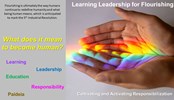New article by Magnus Söderlund: When service robots look at themselves in the mirror: An examination of the effects of perceptions of robotic self-recognition
Abstract
Service robots sharing the same environments with humans are typically designed to have various humanlike features, because perceptions of robots as humanlike make them more acceptable to human users. This study examines one human characteristic that has hitherto been unexplored in studies of humans' perceptions of robots: a self-recognition ability. For (adult) humans, self-recognition is typically uncomplicated and effortless, yet it is of fundamental importance for social interaction, and therefore it was assumed that perceptions of robotic self-recognition abilities would be used for inferences about other robot attributes. A between-subjects experiment, in which a domestic service robot's ability to recognize itself was manipulated (low vs. high), showed that high self-recognition boosted perceptions of the quality of the service delivered by the robot, and that this effect was mediated by perceptions of the robot as having a capacity for learning and having theory of mind.
Read the article: https://www.sciencedirect.com/science/article/pii/S0969698921003866



